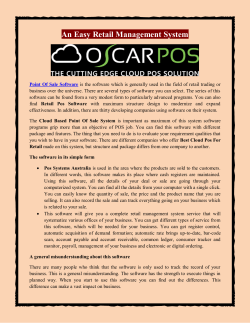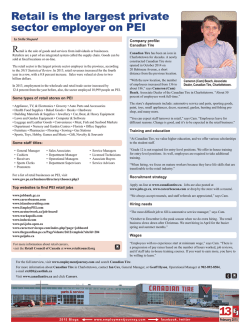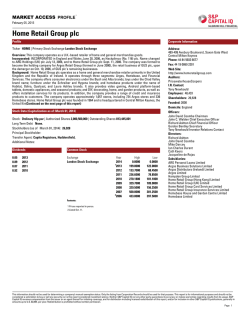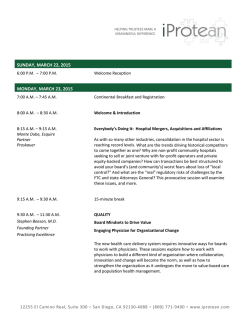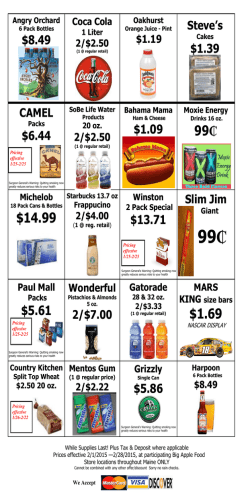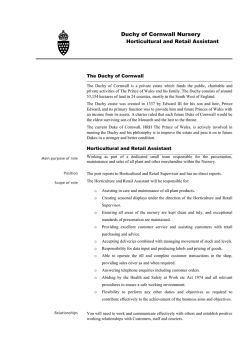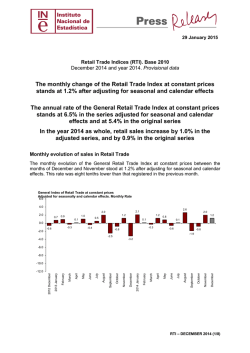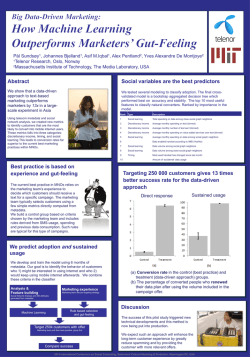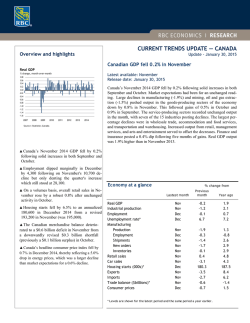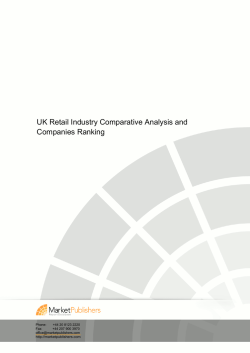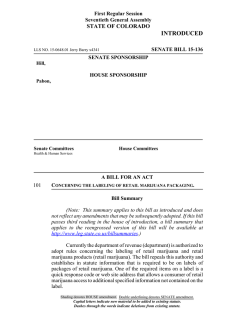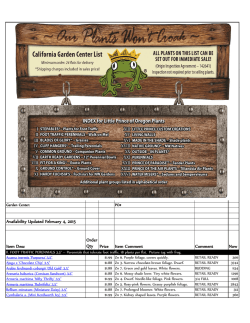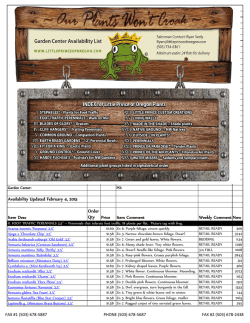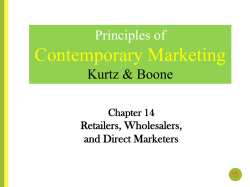
Performance Measurement Design on the Retail Store Level
Performance Measurement Design on the Retail Store Level Mag. Verena Harrauer, Vienna University of Economics and Business Purpose: The retailing sector is a striking factor for national economies. Globally, the big players WalMart (USA), Carrefour (FRA), Tesco (GB) and Metro Group (GER) dominate the industry and substantially contribute to nations’ economies. Their main objectives are profitable market share growth and improvement of business performance which is even harder to reach after the recent worldwide economic crisis (Ganesan et al. 2009). One consequence of intensive competition is the demand for greater accountability in the retailing industry and provision of timely and relevant information (MSI 2010-2012). Moreover, PM is used to evaluate performance of employees. In this context, ‘Performance Measurement’ (PM) is defined as the quantification of efficiency and effectiveness (Neely et al. 1995) that combines decision facilitating and influencing functions (van Veen-Dirks 2010). Especially in retailing, where intangible processes such as service orientation characterize the daily business, PM faces the challenge of correctly illustrating those practices. Managers are looking for an appropriate set of metrics that provides a certain breadth - defined as the variety of financial and non-financial measures - and a certain scope – defined as the number of relevant metrics. This set of metrics addresses different organizational levels, processes and functions (Homburg et al. 2012). The study at hand aims to explore how decision facilitating and influencing functions of PM form its design in retailing. On an individual level, the perceived usefulness of PM is investigated for retail managers on a daily basis. Approach/method/design: The study applied a mixed methods approach to combine problem-centered and multidimensional perspectives and generate theoretical and empirical results (Harrison & Reilly 2011). First, a systematic literature review of 270 peer-reviewed journal articles formed the basis. Second, 22 problem-centered interviews with retail store managers were conducted in the two different contexts (USA; Europe). Derived from the results of the qualitative design a management survey with 134 retail managers explores how different PM-sets are used on the operational retail level. Findings: Reviewing the last 50 years of PM literature reveals that (international) publication activity has been rising exponentially. In retailing and marketing frameworks that combine financial and non-financial performance metrics are crucial because “comprehensive” and “balanced” PM-sets reflect customer and employee oriented strategies more properly. As a consequence, a recent research stream tries to identify contingency factors that significantly influence PMdesign and use (Homburg et al. 2012; Mintz & Currim 2013). Based on the results of the literature review, problem-centred interviews identify cultural impacts on operational PM-sets design and use. The results show that strategic orientation influences available performance metrics on the store level. In the U.S. retailing companies follow differentiation strategies. Therefore, higher level management regularly communicates customer and employee related metrics to store managers. Moreover, top managers use metrics to evaluate performance of store managers and their employees on a daily basis. In contrast to that, store managers in German speaking countries deal with cost leadership strategies. Employees focus on running the business as efficiently as possible and manage instore logistic challenges. PM is mainly used to control for product related performance. Incentive systems reflect the cash-flow-driven thinking and include sales, stock level and stock turns as KPIs. Non-financial metrics have hardly any relevance on the store level. Finally, survey results also show that retail managers rely on financial performance indicators. 96% of all retail managers use Sales, 84% integrate Margin and 80% implement Stock Turn. Besides financial indicators, companies that focus on efficiency report significantly more metrics related to assortment (t=3.06, p<0.05), customers (t=3.74, p<0.05) and employees (t=3.25; p<0.05) compared to service oriented companies. On the individual level, implemented incentive systems significantly influence how often managers use PM. On a 5-point Likert scale, self-employed retail managers in efficient contexts (M=2.3) use PM significantly more often than in service oriented companies (M=3.0). Compared to selfemployed managers, employees with flexible incentive components integrate PM significantly more often in their daily business (Service orientation: M=1.5; efficiency orientation: M=1.8). Value/contribution: Recent literature focuses on the strategic side of PM which reflects strategy and demonstrates cause-and-effect relationships (e.g. Homburg et al. 2012). The influence of PM on the store routine of retail managers is hardly analyzed (e.g. Casas-Arce & Martínez-Jerez 2009). Here, store employees substantially contribute to the success of retail companies as they are the point of interaction with shoppers (Netemeyer et al. 2010). Store managers execute different responsibilities like managing diverse reports and reacting on unpredictable events. As a consequence, the impact of PM-design in the daily routine of retailers is worth looking at. Submission category: New Researcher Bibliography: Casas-Arce, P. and F. A. Martínez-Jerez (2009). "Relative Performance Compensation, Contests, and Dynamic Incentives." Management Science 55(8): 1306-1320. Ganesan, S., M. George, et al. (2009). "Supply Chain Management and Retailer Performance: Emerging Trends, Issues, and Implications for Research and Practice." Journal of Retailing 85(1): 84-94. Harrison, R. L. and T. M. Reilly (2011). "Mixed methods designs in marketing research." Qualitative Market Research 14(1): 7-26. Homburg, C., M. Artz, et al. (2012). "Marketing Performance Measurement Systems: Does Comprehensiveness Really Improve Performance?" Journal of Marketing 76(3): 56-77. Mintz, O. and I. S. Currim (2013). "What Drives Managerial Use of Marketing and Financial Metrics and Does Metric Use Impact Performance of Marketing Mix Activities?" Journal of Marketing(77): 17-40. MSI, M. S. I. (2010-2012). Research Priorities. Neely, A., M. Gregory, et al. (1995). "Performance measurement system design. A literature review and research agenda." International Journal of Operations & Production Management 15(4): 80-116. Netemeyer, R. G., J. G. Maxham Iii, et al. (2010). "Store Manager Performance and Satisfaction: Effects on Store Employee Performance and Satisfaction, Store Customer Satisfaction, and Store Customer Spending Growth." Journal of Applied Psychology 95(3): 530-545. van Veen-Dirks, P. (2010). "Different uses of performance measures: the evaluation versus reward of production managers." Accounting, Organizations and Society 35(2): 141-164.
© Copyright 2026
